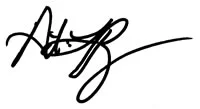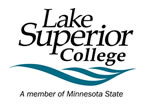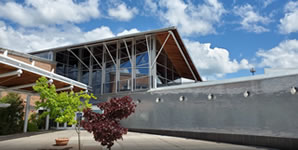Part 1: Purpose
This procedure establishes guidelines and responsibilities for the electronic surveillance system at Lake Superior College (LSC).
Part 2: Video Surveillance Location, Operation and Control
- LSC buildings and grounds may be equipped with video monitoring devices.
- Video surveillance may be placed in areas where surveillance has been deemed necessary to protect personal safety, prevent property damage, and monitor other potential security incidents.
- Video surveillance placed outdoors shall be positioned only where it is necessary to protect external assets or to provide for the personal safety of individuals on college grounds or premises.
- Video surveillance shall not be used to monitor offices, private or semi-private rooms, or any room where there is a reasonable expectation of privacy.
- The LSC security coordinator shall manage, control, and audit the use and security of monitoring video surveillance and any related storage devices.
- Only individuals authorized by the security coordinator or college president shall have access to video monitors or be permitted to operate the controls.
- Video surveillance shall not have audio recording capabilities; or any such audio capabilities will not be enabled if they are available.
- The use of dummy or placebo video surveillance is prohibited.
Part 3: Notification
In public areas, signage giving notice of use of video surveillance may be posted as deemed appropriate by the security coordinator or the Vice President of Finance and Administration.
Part 4: Use of Video Recordings
- Video recordings of students, staff, or others may be reviewed or audited to determine adherence to official LSC policies, the LSC Student Code of Conduct (Policy 3.6), and/or Minnesota State policies.
- Lake Superior College may use video surveillance to detect or deter criminal offenses.
- Disclosure of video surveillance data to law enforcement must be authorized in advance by system legal counsel unless a subpoena for specific video surveillance is presented or such consultation is impracticable in the event of a health or safety emergency. The college or its administrators may use video surveillance and the resulting recordings for inquiries and proceedings related to law enforcement, deterrence, and student discipline.
- The college shall not use video monitoring for other purposes unless expressly authorized by the college president (or designee) or by another LSC policy or Minnesota State policy.
Part 5: Protection of Information Related to Retention of Recordings
- Videos are initially recorded on a physical server. Information on the server is retained for 60 days.
- No attempt shall be made to alter any part of a video recording.
- Video recordings that may be relevant to the investigation of an incident will be transferred from the computer server onto removable media such as a USB drive or external hard drive.
- All saved video records not in use should be securely stored in a locked receptacle.
- All video records that have been saved pending the final outcome of an incident investigation shall be numbered, dated, and retained in a location to be determined by the security coordinator.
- Video records that contain personal information used to make a decision directly affecting an individual must be retained for a minimum of one year and may be retained by the college indefinitely as a permanent archive.
Part 6: Disclosure of Video Recordings
- Video surveillance data may be nonpublic or private “security information” as defined by Minn. Stat. § 13.37 Subd. 1 (a) or private personnel or educational data pursuant to Minn. Stat. §§13.43, Subd. 4 and 13.32, Subd. 3, and FERPA, 20 USC 1232g, which may be accessed, used and disclosed to third parties only as consistent with those laws.
- The security coordinator or college president (or designee) must authorize access to all video records.
- A manual log shall be maintained by the security coordinator of all access to or use of recorded materials. The log shall include:
- The camera number or title and the date and time of the recording.
- The name of the individual or agency that was given access to the recording,
- The date that access was given,
- The reason that access was given, and
- The date when access is no longer available to the individual or agency.
- Information contained within the video access log shall be considered public information unless prohibited by law or judicial order.
- LSC will provide reasonable security measures to prevent unauthorized access to the electronic surveillance network; however, LSC cannot guarantee that access to the network through illegal methods is impossible. Individuals who are believed to have tampered with or destroyed video surveillance equipment or recordings, or individuals who have accessed video surveillance records without authorization may be subject to discipline under the applicable personnel or student conduct process and criminal prosecution, as appropriate.
Part 7: Disposal or Destruction of Recordings
- Copies of surveillance recordings need not be kept by the college if there have been no identified incidents within view of the video surveillance cameras. In these cases, there will be no permanent record of the recordings.
- All saved recordings shall be disposed of in a secure manner unless they are archived as part of a permanent record as stated above in Part 5 number 6. Removable media shall be shredded, burned, degaussed, or otherwise made permanently unreadable.
Part 8: Video Monitors and Viewing of Recordings
- Video monitoring for security purposes will be conducted in a professional, confidential, ethical, and legal manner.
- Individuals authorized to monitor video surveillance will do so only after receiving orientation and training from the security coordinator based on their level of access to such equipment.
- Only the security coordinator or individuals authorized by the security coordinator and members of law enforcement agencies shall have access to video monitors recording real-time while they are in operation.
- Video monitors should be in controlled access areas wherever possible.
- Video records should be viewed on a need-to-know basis only as determined by the security coordinator or the Vice President of Finance and Administration, in such a manner as to avoid public viewing.
- All authorized video surveillance control operators who have access to camera controls (such as pan, tilt, and zoom) will monitor activity based on suspicious behavior, and not monitor individuals based on race, sex (including pregnancy, childbirth, and related medical conditions), color, creed, religion, age, national origin, disability, marital status, status with regard to public assistance, sexual orientation, gender identity, gender expression, veteran status, familial status, and membership or activity in a local human rights commission or inclusion in any group or class protected by state or federal law (see LSC policy 1B.1).
Related Documents and Links
- Minn Stat. § 15.17 Official Records
- Minn Stat. § 138.17 Government Records
- Minn. Stat. § 13.37 Subd. 1 (a) General Non-Public Data
- Minn. Stat. §13.43, Subd. 4 Personnel Data
- Minn. Stat. §13.32, Subd. 3 Educational Data
- FERPA, 20 USC § 1232g Family Educational Rights and Privacy Act
- LSC Policy 1B.1 Nondiscrimination in Employment & Education Opportunity
History
Date Implemented: May 6, 2004
Date Reviewed/Revised: January 2024
President’s Signature Date: March 14, 2024



